Category: Socio-Economic Prosperity
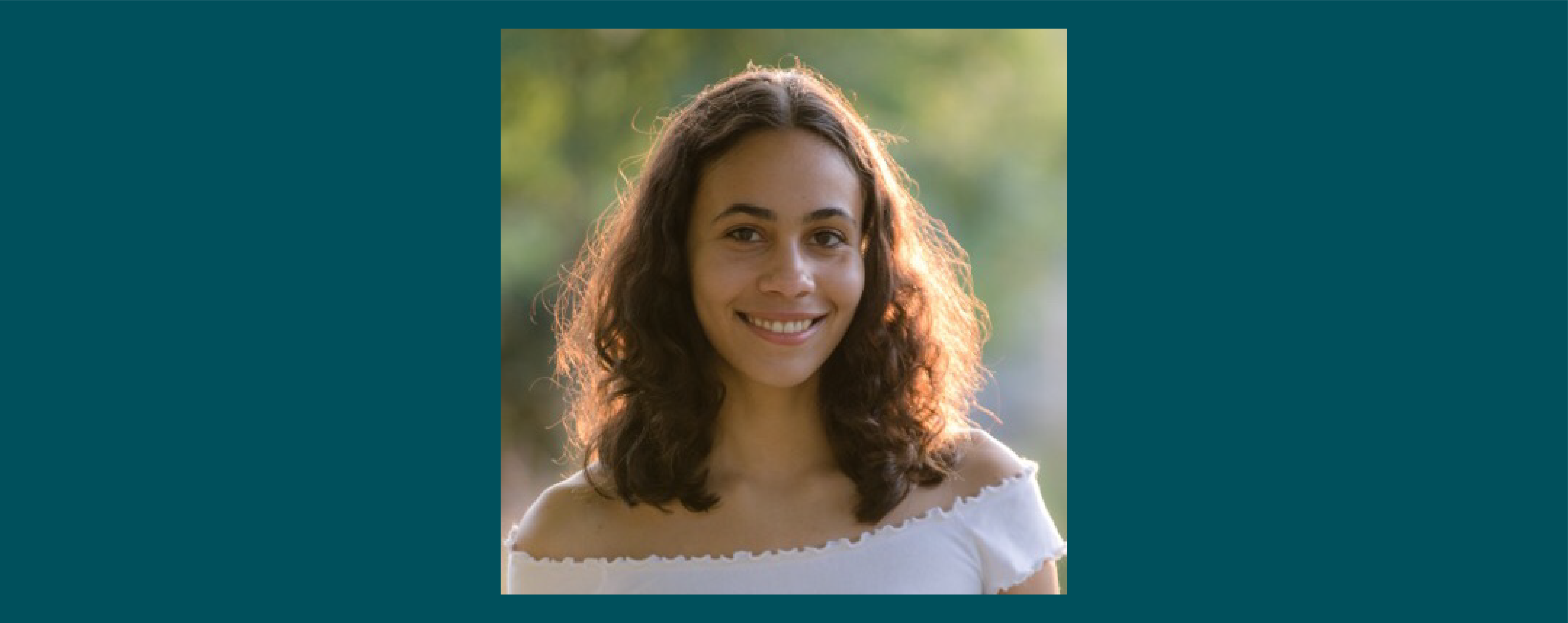
Revisiting Milwaukee: Learning About My Hometown Through Service
By Elyse Cornwall, ’22
The first time I drove to Moody Park, I suppressed my nerves about driving into an area known for reckless driving. I reminded myself that these feelings came from racist assumptions about a community I had never meaningfully interacted with. Still, I stopped at green lights as oncoming cars ran the red, and rushed down main streets to keep other cars from skirting past me. Thus, I arrived at Moody Park feeling simultaneously afraid and embarrassed, and that was when the youth participants arrived. My primary responsibilities were event planning and coordinating with other volunteers, but I realized that my work behind the scenes could not be effective until I immersed myself in the community I served. When I ate meals, played games, and shared stories at Moody Park, a new side of my service experience emerged.
My weekly discussions with youth living near Moody Park covered topics like drugs and alcohol, police relations, and reckless driving. The group’s familiarity with dangerous situations seemed to contradict their charisma and friendliness. I helped host the Zeidler Center’s listening circle events, which allowed youth and police officers from the area to talk with each other in small groups. The youth took turns responding to prompts such as, “Describe an experience you have had with a police officer,” sharing their experiences rather than debating or convincing anyone. The Zeidler Center hosts listening circles like these throughout the Greater Milwaukee Area, featuring topics like political polarization, race relations, and education. These events are based on the organization’s belief that open, respectful dialogue promotes positive change. I watched as the listening circles at Moody Park shifted from short responses to candid conversation. By the end of the discussions, youth and officers were sharing accounts of their days and stories of hardship, relating to one another on a personal level.
As an outsider in this community, I felt hesitant to expand beyond my role as a staff member, but eventually gave in with the encouragement of the youth and other staff. I shared my own experiences, admitted the gaps in my knowledge of Milwaukee, and put myself in a position to learn from the youth I had aimed to serve. Not only did I feel more connected to a community that I hadn’t interacted with before, but I also felt a stronger obligation towards my city. I found that my view of civic duty and participation changed once I got to know the people with whom I was sharing a community.
By the end of the summer, I started to see my service experience in connection to my parents’ work in Milwaukee as public servants. Usually, I thought of my parents as lawyers who happened to work for the state and county. Though they had expressed pride in serving those who relied upon public legal assistance, I never thought of their occupations as reflections of their character. As a court commissioner, my father has the opportunity to combat the racial bias that targets people with his racial identity in most courtrooms. Like my father, the staff and volunteers at the Zeidler Center prioritize listening to and learning from the communities they serve.
I am glad to have developed this new civic understanding in the context of Milwaukee, through the service I have done. When I returned to Stanford in the fall, I brought with me a willingness not only to serve, but also to know the people within my community who are most targeted and misrepresented.

Elyse Cornwall, ’22, studies computer science at Stanford. Originally from Milwaukee, WI, Elyse completed a Cardinal Quarter in her hometown the summer after her freshman year, working to support the Zeidler Center, an organization that fosters civil dialogue across perspectives. At Stanford, Elyse is a CS106A section leader; a team leader for Ideas Out Loud, Stanford’s TEDx club; and a member of the Delta Delta Delta Sorority.
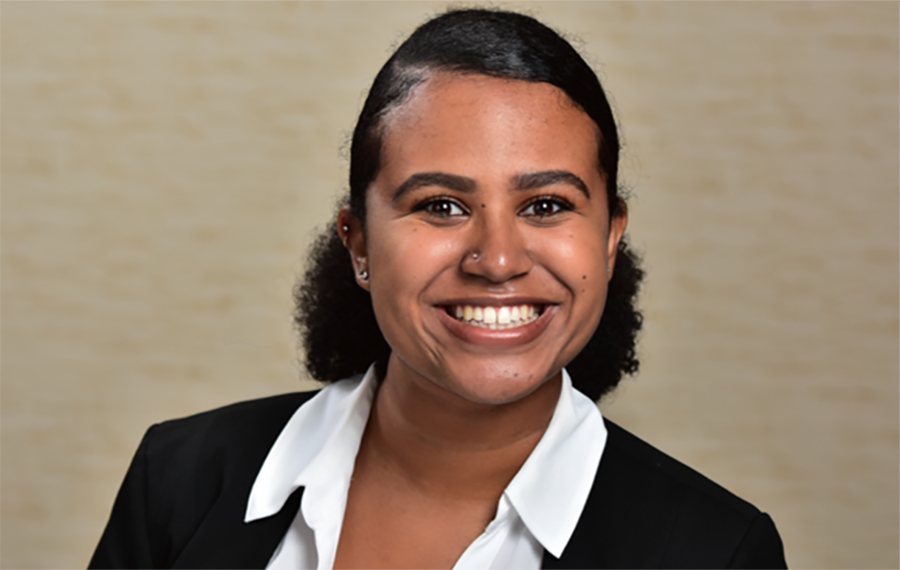
Redesigning Justice: Transforming Housing Courts to Housing Centers
By Leya Elias, ’21
Only at Stanford could I take a class that allowed me to use legal design to create and test innovative solutions to a pressing challenge in my hometown: homelessness.
In the summer of 2019, I interned with the Public Rights Project, where I learned about the under-enforcement of consumer protection laws and the cracks within the civil justice system. After leaving my internship, I craved an opportunity that would teach me more about the civil court system, while also allowing me to work alongside community members to make improvements where needed. Luckily, I found a Cardinal Course called LAW806Y: Justice by Design: Eviction and Debt Collection. This course gave me the opportunity to explore my interests in civil courts and economic justice through a legal justice lens and design-thinking practice.
Through the class, I got to work alongside a community partner, the Judicial Council of California, and spend time learning from people—community organizers, attorneys, court staff, policymakers, landlords, and tenants—who have all touched the eviction system, for better or for worse. One stark injustice that consistently came up in all of our interviews was the disparity in access to legal representation in the court system and how, as a result, many tenants face little chance at avoiding an eviction.
While the majority of tenants do not have access to attorneys, over 60 percent of those who do are able to successfully avoid evictions. Access to legal representation is a huge unmet need for populations most at risk for homelessness. In addition to the inaccessibility of civil legal representation, tenants experiencing eviction are not only at high risk for homelessness, but are also missing a centralized support system dedicated to their success and well-being.
Since 2018, homelessness has increased 17 percent and 43 percent in San Francisco and Alameda, respectively. Witnessing the changes in my own city, I became interested in how the court could serve as the center of preventative support systems for not only those experiencing evictions, but those at risk for homelessness. Through the course, I had the opportunity to work on a facilitated holistic social services and legal aid program based in courthouses that offers resources such as rental assistance, skills training, and relocation programs.
As I work on testing my prototype alongside community partners and the Judicial Council of California, I am motivated by the potential for this program to decrease the rampant displacement across Bay Area communities. As a new family member or friend experiences eviction, displacement, or homelessness, the work I am doing in this class becomes even more pertinent and leaves me feeling honored to be able to think about how I can help.
Before the class, I saw becoming a practicing attorney as my only path toward mitigating the inaccessibility of legal representation. However, the course’s application of design-thinking to legal systems has equipped me with an innovative toolbox with which to approach systematic legal issues as an attorney. As I look forward to my senior year, I am excited to take this new experience of social justice-oriented design-thinking to my work in and out of the classroom. I am empowered not only to become an attorney, but to become an attorney capable of redesigning our country’s legal system into one that works for our most at-risk communities.

Leya Elias, ’21, grew up in San Francisco, CA. At Stanford, she studies psychology with a minor in political science and African & African American Studies. Leya completed a Cardinal Quarter in summer 2018 with the Ghana Center for Democratic Development and worked with the Public Rights Project in Oakland, CA during summer 2019 with the support of Emerson Collective. Leya is co-president of the Stanford Ethiopian & Eritrean Students’ Association and the Stanford Black Pre-Law Society, and has served as chair of the ASSU Undergraduate Senate as well as an Institute for Diversity in the Arts fellow.

Girls Run the World in Gorongosa National Park
By Eric Wilburn, MS ’18, MA ’18
Gabriela “Gaby” Curtiz grew up just down the road from Gorongosa National Park in Mozambique. The park is one of the most biodiverse places on Earth and is surrounded by more than 200,000 people who live on very limited resources. These neighboring communities struggle to make ends meet due to lack of employment. Many young women in these communities lack the opportunity to finish primary school because of societal expectations, household responsibilities, and a shortage of schools and teachers.

When Gaby was twelve years old, her primary school showed a National Geographic film about Gorongosa National Park, sparking her dream to work with animals in the park. Nine years later, Gaby was certified as the first female safari tourism guide in Gorongosa’s history.
I met Gaby last year on her first trip to the United States. She was visiting Boise State University, where she will begin her undergraduate studies this fall. Of course, service was a part of her trip! She gave a talk to a group of elementary school students about Gorongosa. It was amazing to see their eyes light up and their hands skyrocket to the ceiling with questions about her life in Gorongosa. She emphasized the importance of working with local communities in conservation efforts, and explained that providing livelihoods for local families was the key to sustainable nature conservation. Her example? Coffee.
Why coffee? Because there are hundreds of families like Gaby’s living on the flanks of Mount Gorongosa that need an alternative to unsustainable agricultural practices to feed their families. There is no need for farmers to cut down the forests to make room for non-native crops, as farmers can plant native hardwood saplings in between the rows of coffee to provide shade. Coffee gives these farmers a dependable income while helping restore the rainforests of Gorongosa.
I was thrilled to hear Gaby share her story, and was particularly excited when she chose coffee as her example. Having recently graduated from Stanford, I had just begun working with Gorongosa National Park to launch Gorongosa Coffee, a for-profit company that sells premium roasted coffee around the world and sends 100% of profits back to the park to support operating costs.
After her talk, Gaby and I were chatting about how Gorongosa Coffee wanted each of our roasted coffees to support a different initiative in the park. Gaby said that the most unique aspect of Gorongosa is that the park fundamentally believes that girls’ education is the key to both human development and nature conservation.
Inspired by Gaby, Gorongosa Coffee created a Girls Run the World coffee that sends 100% of profits to help over 20,000 girls in Gorongosa finish high school. The funds help build schools, provide high school scholarships, and connect girls with mentors through afterschool programs. We hope to demonstrate that when we give girls in Mozambique the confidence, capability, and opportunities to determine their own futures, we encourage more leaders like Gaby.
One of the defining aspects of our model that helps ensure our company has a positive impact is that the lone shareholder of Gorongosa Coffee is the trust that funds the park. In other words, Gorongosa Coffee is a social enterprise which keeps control of this community-based initiative within the community it serves.
Gaby graduated from high school in Gorongosa and will start at Boise State University in September, pursuing a degree in business tourism. Her goal is eventually to become the head of tourism for Gorongosa National Park.
Gaby and I come from very different backgrounds, but we share a commitment to serving the people, wildlife, and ecosystems of Gorongosa. We believe that the path forward for people and the planet is that every business thrives, not to fill the pockets of a few shareholders, but in service of an equitable and sustainable future for all.
I invite you to help us empower young women like Gaby from the communities of Gorongosa to break barriers and bring positive change to their communities. You may order our coffee at GorongosaCoffee.com.

Eric Wilburn, MS ’18, MA ’18, served in the Peace Corps in Mozambique before arriving at Stanford to pursue dual masters degrees in environmental engineering and public policy. During his time at Stanford, Eric was a Graduate Public Service Fellow and also coached the Stanford Triathlon Team. Recently, Eric has been helping to launch a company called Gorongosa Coffee that aims to benefit local communities, wildlife, and nature in Mozambique by supporting conservation, education, and economic development.
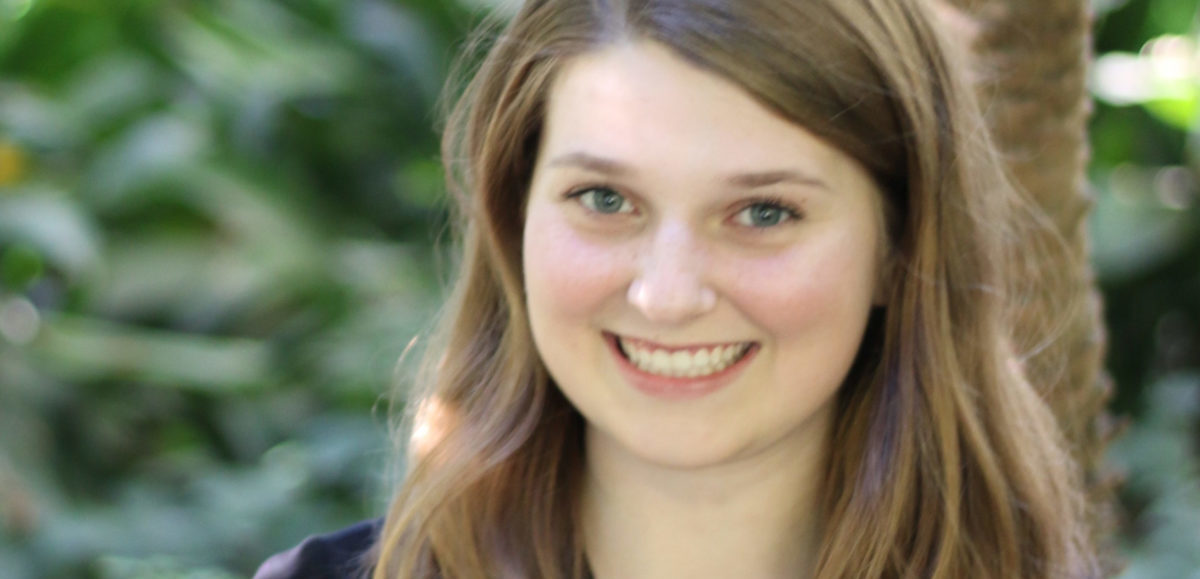
The Value and Validity of Nontraditional Education Paths
By Tess Stewart, ’21
Last summer, I had the pleasure of working as an admissions and recruitment intern at Year Up, an education nonprofit that aims to take young adults ages 18 to 24 from minimum-wage jobs to well-paying careers in just one year. Year Up’s program is split into two phases. The first phase, learning and development, focuses on teaching these young professionals the necessary skills to succeed in the modern workforce. During the next six months, students are placed at an internship to gain real-world working experience.
As part of the admissions and recruitment team, I helped build the next class of Year Up students. By far, my favorite part of the job was conducting admissions interviews. I would spend about an hour talking individually with young adults from all walks of life about their experiences, passions, and goals. I was exposed to such a breadth of wonderful people who were motivated to kickstart their professional careers.
Additionally, this summer was especially unique because it opened my eyes to the variety of paths to success that exist. I am extremely lucky to attend an institution such as Stanford, but my internship helped me realize that getting a college degree is by no means the only way to achieve one’s goals. Through my work at Year Up, I was able to work with incredibly smart young adults who were in the process of following an untraditional path toward their goals. Whether deciding to restart their education after having their second child or deciding that a string of minimum-wage jobs just was not cutting it anymore, these young adults approached Year Up with the passion and drive to reach their dream job.
As an intern, I was able to witness the immense impact Year Up has on the lives of its students. Not only does Year Up provide students with a stable support system, career advice, and tangible tools to use in the workforce, but this organization also teaches students to have confidence in themselves and their value in the professional world. Furthermore, it forced me to reflect on my own time at Stanford. I began thinking critically about my own learning, questioning how successfully I was utilizing my time at Stanford to reach my goals. Working at Year Up greatly broadened my view about what it means to be a young professional and how we can support individuals who may have untraditional paths, so that, regardless of background, students can reach their full potential.

Tess Stewart, ’21, is originally from Los Angeles, CA, and studies symbolic systems at Stanford. In the summer of 2019, Tess completed a Cardinal Quarter as part of the admissions and recruitment team at Year Up, a year-long program that supports young professionals in pursuit of meaningful and sustainable careers.
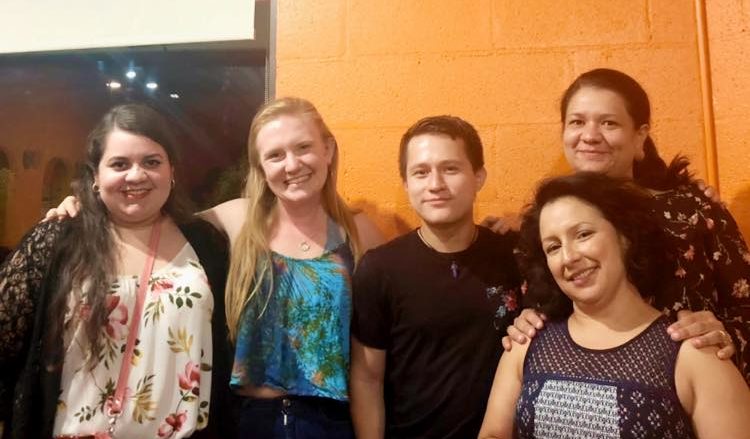
Listen Deeply and Act Strategically: Organizing for More Equitable Education in Colorado
By Tavia Teitler, ’21
I could see the majestic Colorado mountains in my rearview mirror and feel butterflies in my stomach as I pulled into the parking lot of Sister Carmen Community Center. It was my first day of work at Engaged Latino Parents Advancing Student Outcomes (ELPASO), and it only took about 10 minutes of the weekly Monday morning staff meeting for me to realize that I would be working for a truly incredible organization.
The ELPASO community organizers and school-readiness coordinators introduced themselves to me and immediately launched into a discussion about ways to effectively engage with their community in the current climate of fear about immigration. ELPASO’s then executive director, Tere Garcia, then spoke passionately about her new idea for a teddy bear clinic that could help raise awareness about the importance of preventative medical care. As I listened, I was blown away by the passion, energy, and power in the room. My sense of awe and inspiration only grew throughout the summer as I became more familiar with the women of ELPASO and the work they do.
I am majoring in comparative studies in race and ethnicity with a concentration in inequality in education, so a lot of my time at Stanford has been spent learning about theories of education inequity. However, I lacked intimate firsthand knowledge of what people were doing in their communities to tackle these issues. In other words, I didn’t know what many of these concepts and theories looked like on the ground.
ELPASO is a community organization based in Boulder, Colorado, that works to help close the opportunity and achievement gap between White and Latinx students in the area through effective parent engagement. By learning about ELPASO’s parent training and parent advocacy groups, I came to appreciate the power of informed, organized parents, and gained a deeper understanding of all of the factors that go into fighting for more equitable education. The theories I had learned about in the classroom came to life for me as I tagged along as the coordinators went door to door to recruit parents for their training program and listened as parents described their experiences raising their children in this country. I attended meetings with the parent advocacy group to ask school district officials to revise their translator policies and hire bilingual school secretaries. I also took notes as the women held a meeting with the director of the local free clinic to voice concerns about how they and the parents they work with were being treated. Later in the summer, I helped prepare materials for a workshop at a local trailer park on how to fill out money orders properly after the residents were robbed of a month’s rent by their landlord.
I was inspired by the organizers’ and coordinators’ ability to respond to more immediate needs in their community while still maintaining focus on their long-term mission. I learned lessons in the field from the women of ELPASO that both challenged and informed the lessons I’ve learned in the classroom. Most importantly, the women of ELPASO showed me what it means to listen deeply and act strategically. I know I will bring this knowledge back to the classroom, and out into the world after graduation.
This summer helped me realize that community organizing and nonprofit work, especially in relation to issues of education access and equity, is the kind of work I want to do in the future. Though I still need to spend time reflecting on my place as a White Stanford student in organizations that serve historically marginalized communities, I now know that I am committed to learning, just as I learned from my co-workers at ELPASO.

Originally from Carbondale, Colorado, Tavia Teitler, ’21, is majoring in comparative studies in race and ethnicity and psychology. Her interest in education equity led her to return to her home state for a Cardinal Quarter fellowship with Engaged Latino Parents Advancing Student Outcomes (ELPASO) during the summer of 2019. Tavia also serves as a community engaged learning coordinator at the Haas Center for Public Service and as co-chair of Ballet Folklórico de Stanford, a Mexican folk dance group on campus.
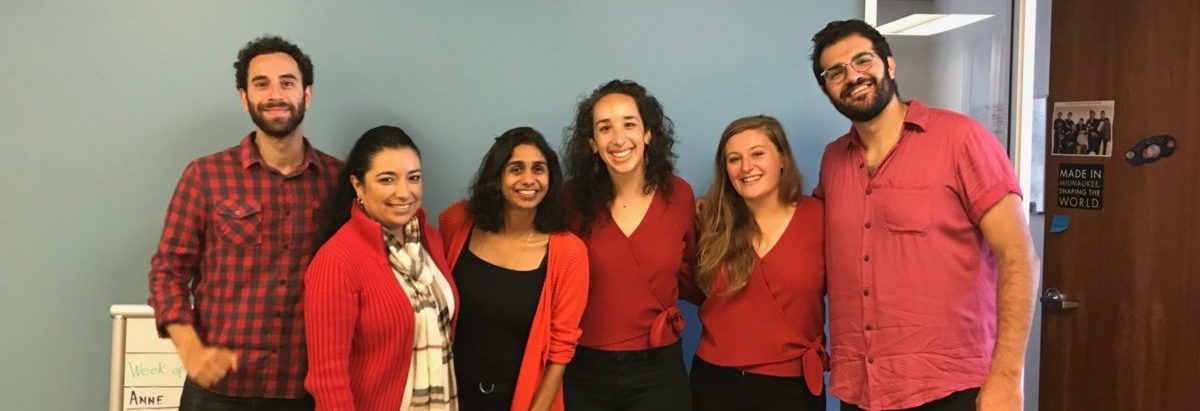
When Home is a Region: Working Towards an Inclusive Bay Area
By Nani Friedman, ’20
In my second week as an intern at Enterprise Community Partners, an organization focused on affordable housing issues, I attended a meeting of the Mayor of Oakland’s Housing Cabinet. A mix of city housing department staff and representatives from affordable housing nonprofits spent the two-hour meeting discussing the importance and challenges of incorporating racial equity components into the city’s affordable housing program guidelines. Though they weren’t able to come to a conclusive decision in two hours, and although people disagreed on the timing and implementation method, everyone was incredibly passionate and utilized their experience to offer new ideas.
I was deeply inspired and motivated by what I saw in that room. As I reflected on what was most meaningful to me this summer, I kept coming back to the constant excitement I felt spending all summer around people who shared my passion for and my perspective on the inextricable link between housing policy and racial justice.
As a regional housing policy intern, I spent most of my summer drafting legislative language and conducting research tasks for AB 1487, state legislation that enables the creation of a Bay Area Housing Finance Authority for the entire nine-county (and 101-city) region. I learned that laws are, in fact, written on Word software. I learned about the political and logistical opportunities and challenges of coordinating an affordable housing strategy at the regional level. I began developing a regional perspective, learning comparatively about the unique housing needs across different jurisdictions; the affordable housing landscape is entirely different between Oakland, Palo Alto, Fairfield, and Sonoma in the context of fire recovery, yet we worked to design a framework for a regional authority that will supplement collective needs and work for everyone. I attended convenings with people from around the Bay Area who were trying to work together to solve our regional problems.
Having grown up in the Bay Area, my work in housing justice at the local level has always felt personal. I am witnessing my friends from high school make decisions about whether or not they can afford to live on the Peninsula, while college friends who have graduated join the ranks of new tenants who are both drawn into and disgusted by the contradictions of Silicon Valley culture. Working in the financial district in San Francisco this summer gave me a new perspective into this culture, as I witnessed who actually lives and works in this region. I know that I bear unique witness to this dual perspective, the “old” and the “new.”
However, I did not anticipate that working on a state bill for a regional housing authority would make me reflect on what this entire region means to me personally. I knew that I had a deep commitment to justice in the county I grew up in, but working on housing at the regional level reframed the geographies that I include in my “home.” If custodial staff working at Stanford are commuting from Antioch, I must consider Antioch to be a part of our home. I realized that if I am going to fight towards an inclusive Bay Area – against the racial and socioeconomic segregation that occurs on a regional level – I needed to make my personal definition of home inclusive of the entire region. The futures of Richmond and Marin, for example, or Oakland and Menlo Park, are deeply connected. I now feel that I have a stake in these connections as a part of my dedication to equity in the place I call home.

Nani Friedman (she/her), ’20 grew up in Belmont, CA. With a major in Urban Studies and a minor in Comparative Studies in Race and Ethnicity, Nani applies her studies to affordable housing issues. She has participated in an Urban Summer Fellowship (2019) and a Community-Based Research Fellowship (2017) through Cardinal Quarter. She is a founding member of the Stanford Coalition for Planning an Equitable 2035 (SCoPE 2035), a housing justice activism group at Stanford.
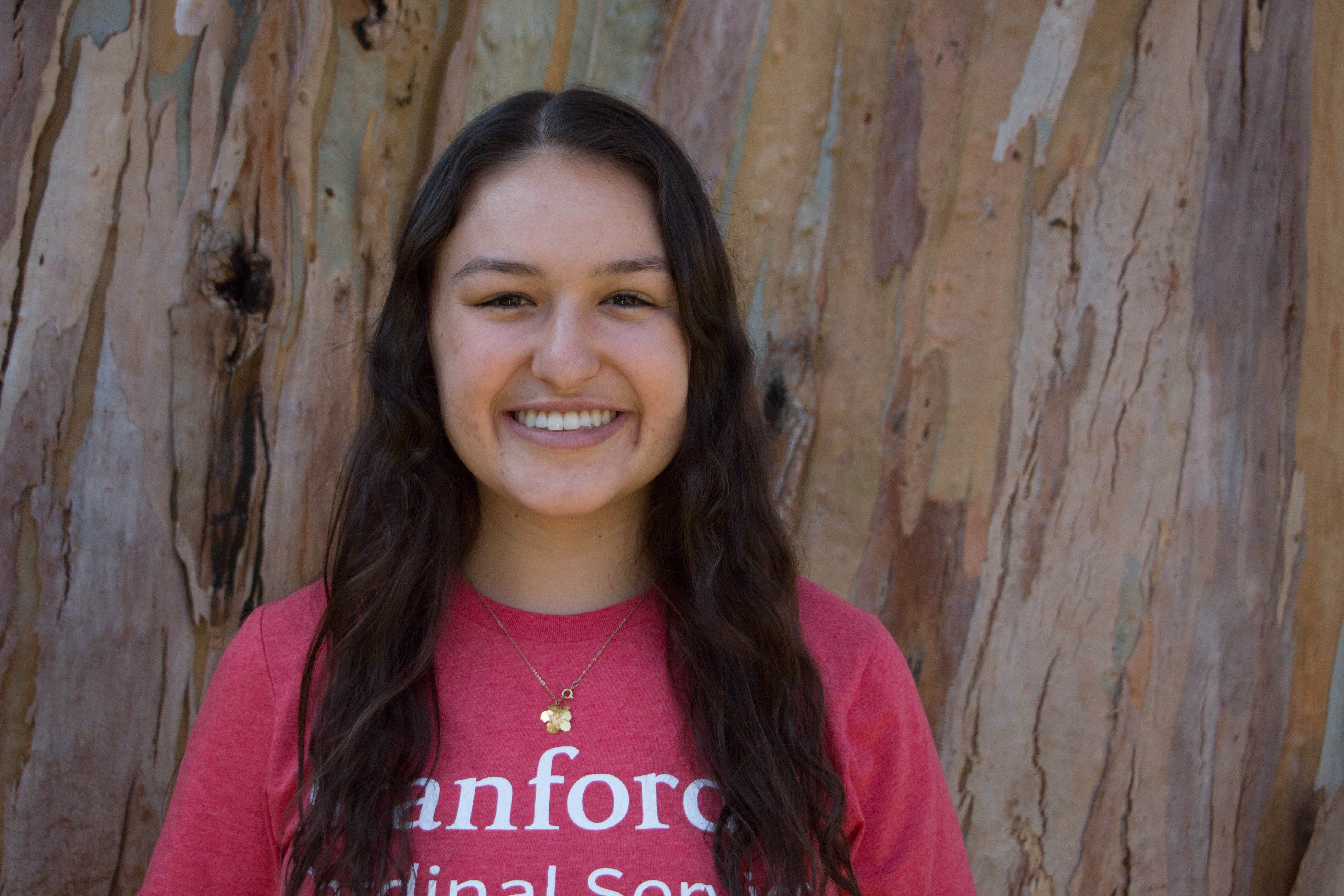
Beyond the Stethoscope: Addressing the Social Determinants of Health
By Nikki Apana, ’20
For my uncle, no level of mental health treatment could cure his chronic homelessness. No number of visits to the psychiatrist could shield him from the physical and psychological trauma that accompany living on the street. Having witnessed the effects of homelessness on my uncle’s overall wellbeing, I became deeply committed to addressing healthcare disparities through medicine and public health.
At Stanford, I sought out courses that could help me understand my uncle’s experience and how to help. My frosh year I found a Cardinal Course that allowed me to combine my academic interests in public health and passion for public service: Social Emergency Medicine and Community Engagement. In the class, we discussed how socioeconomic status affects health status, and I got to see how these trends play out in the emergency room (ER) through a partnership with our partner organization, Stanford Health Advocacy and Research in the Emergency Department, or SHAR(ED).
The emergency room is a safety net. When people don’t have anywhere else to go, that’s where they end up. Sometimes emergency room patients come in for something as minor as a cold—or a serious condition after a minor condition goes unmanaged for a long time. The hospital ranks the severity of a patient’s condition on a scale of one to five, with one being the most severe. But the ranking says little about the social causes of their illness.
As a volunteer, I screened patients at the Stanford Hospital Emergency Department for social needs that could negatively affect their health. Some of the most common issues included the lack of affordable housing, difficulty accessing a primary care physician, high cost of childcare, lack of healthy food, and difficulty paying utility bills. At the end of each visit, I referred patients to local organizations to help reduce the burden of these needs on their overall health.
I valued providing patients with resources to help them cope with different pressures and reduce the frequency of their visits to the emergency room. However, in medicine there is still a disconnect between physicians and patients: ER physicians are there to only treat serious medical conditions, while patients want any treatment.
During one of my volunteer shifts, I was with a Spanish-speaking patient and a nurse asked if I spoke Spanish. I nodded.
“Oh great! Can you translate for me?” the nurse asked. Then she quickly rattled off a number of test results to me. “Her CT scans, blood test, and everything else look normal. Can you tell the patient that everything is fine and that she should just go see her primary care physician?”
I did as the nurse said. Then, the patient looked at me and asked, “Are you sure there’s nothing wrong?”
From an operational standpoint, the nurse was right; the patient should have gone to a primary care physician instead of the ER. But this patient was like many others in the ER who have never heard of a primary care physician or simply cannot afford it.
As I learned from a young age, addressing medical issues requires so much more than scrutinizing physiological symptoms and abnormalities. Access to healthy food, affordable housing, and high-quality healthcare all contribute to individual health and wellbeing and can prevent frequent visits to the emergency department.
After taking this Cardinal Course, I pursued honors thesis research on the barriers patients face in seeking healthcare—research that I plan to use to advocate for policies that ensure patients’ basic right to high-quality healthcare.
As I look beyond graduation, I hope to apply to medical school and become a primary care physician, with the knowledge that a state of complete health cannot be achieved without remediating the underlying social challenges that patients face everyday.
Nikki Apana, ’20, is a premed student studying human biology, with a concentration in race, ethnicity, social class, and public health. She is a Cardinal Service Peer Advisor, Community-Based Research Fellow, volunteer with SHAR(ED) and, patient health advocate with Cardinal Free Clinics. She is also involved with Kaorihiva, the Polynesian dance group at Stanford. Nikki is from Concord, CA.
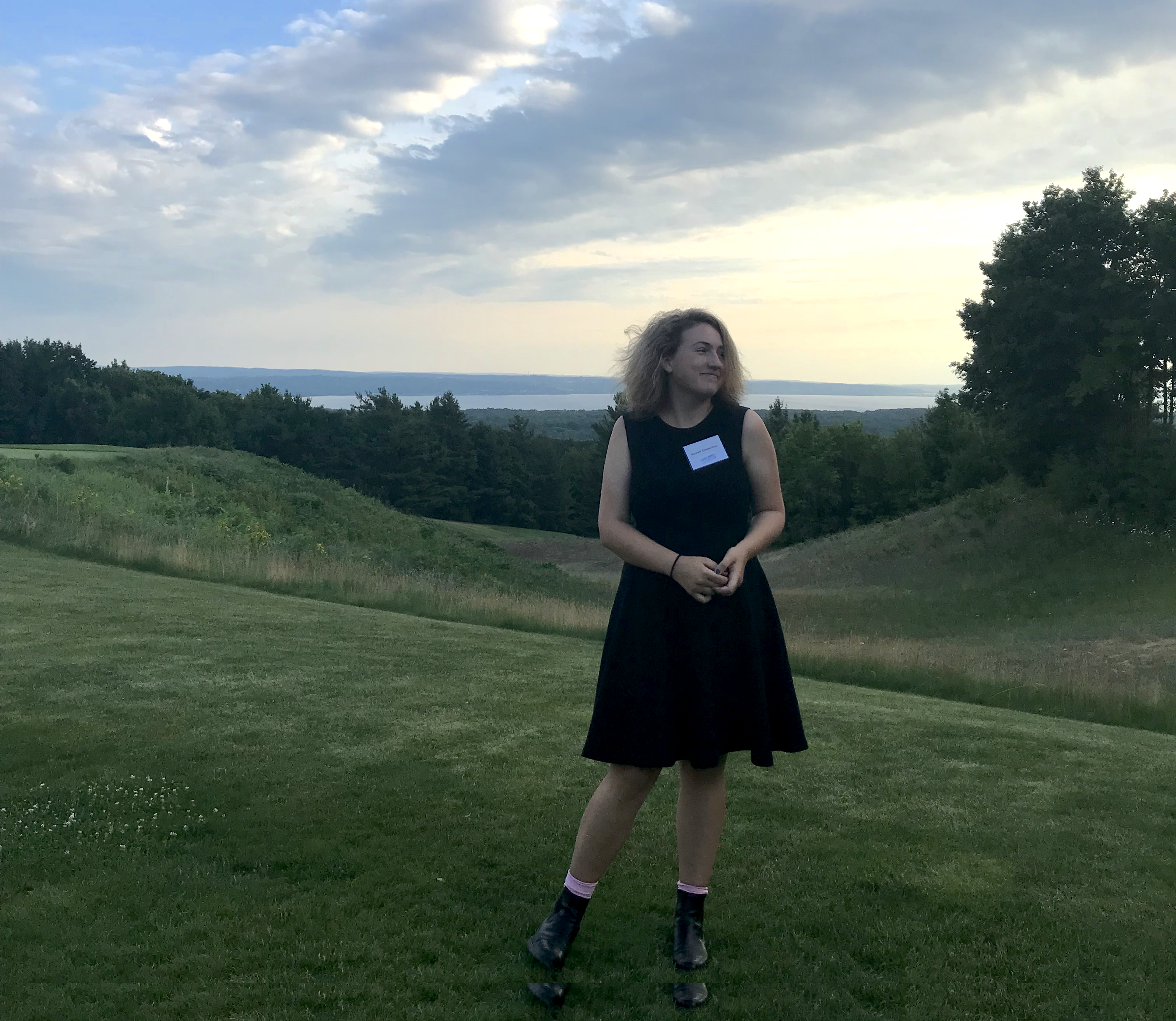
A New Yorker Embraces the Urban-Rural Divide
By Hannah Zimmerman, ’21
I could never get over the sky in northern Michigan. One day, standing beside a trailer park after interviewing residents of an affordable housing project, I looked up at the sky. It was so blue and beautiful, and the trees that provided shade for the park residents were so full and lush. The trailers’ taped-up windows and cigarettes smashed into the ground seemed out of place. I looked back down to fasten the snaps on my red notebook, which contained my handwritten notes from interviews with 15 residents of the trailer park.
This past summer, as a research fellow for Stanford’s Anthropology department, I conducted ethnographic field research in Emmet County, Michigan. Emmet County has been unable to adapt to large economic and environmental shifts affecting northern Michigan. There have been massive factory shutdowns: the lumber industry that employed the northern half of the county has been depleted, and thousands of jobs have been lost in the last 15 years. Since 2015, the poverty and crime rates are growing faster than the state average, and 25 percent of the county’s young people have left the area. This area was also the part of the state where my grandmother grew up. Going back was not only a way to explore issues that I had been studying in an anthropology class but to connect with my roots.
In my research, I asked how people in different communities and of different socio-economic groups perceived poverty in Emmet County. This process brought me into lakefront houses and the halls of local government buildings, and—on that day at the trailer park—face-to-face with rural poverty.
Although I had tried adjusting to local customs, the few weeks spent in Emmet County had been a test for me, as I tried to conduct research outside of my comfort zone. As I sat among the trees and going over the interview notes, a man came over and asked if I was okay. I automatically flinched at the sight of his gun, perched in a holster on his belt. Growing up in New York City, carrying a weapon openly is illegal; the only interaction I had with firearms growing up was watching them used as weapons in movies. A few weeks earlier, a shop owner told me that I should just assume people have a gun on them and be surprised when they don’t. In both small and big ways, I saw how different my worldview was.
Rural poverty was nothing like the poverty I had observed in my home of New York City or in the other cities where I had worked. Rural poverty was spread out and generational. According to many residents I interviewed, the idea of getting out of poverty didn’t seem at all possible. In fact, after cross-checking all 15 interviews, I found that no one who spoke to me thought they could get out of poverty legally. This was a side of America, of poverty, that I couldn’t have imagined existed or would have been able to truly understand by reading articles about it written by New York- or Washington, D.C-based news outlets.
As an anthropology major, you’re asked to consider your own perspective as well as the perspective of others in order to understand complex issues. The rural fieldwork was challenging but it was a powerful introduction to thinking about issues from both an urban and rural perspective. This is important as I continue to work in national politics, because understanding the rural-urban divide is key to enhancing democracy at varying levels of government.
When I returned to campus this year, my friend and I have continued discussing the urban-rural divide: she, someone from rural Illinois and who worked in Washington D.C, and I, a New Yorker who worked in rural Michigan. Together, we are co-writing a piece about this divide and how we understand each other, and this is challenging us to confront our own biases.
Hannah Zimmerman is a sophomore majoring in public policy and anthropology. In summer 2018, she worked as a research fellow in Stanford’s Department of AnthropologyMichigan. She was involved in the Haas Center’s Public Service Leadership Program and has served on Stanford Rural Engagement working group as part of the University’s Long-Range Planning. She is currently a co-chair of the Stanford Student and Labor Alliance, and Stanford Coalition for Healthcare Reform. She is from New York City.
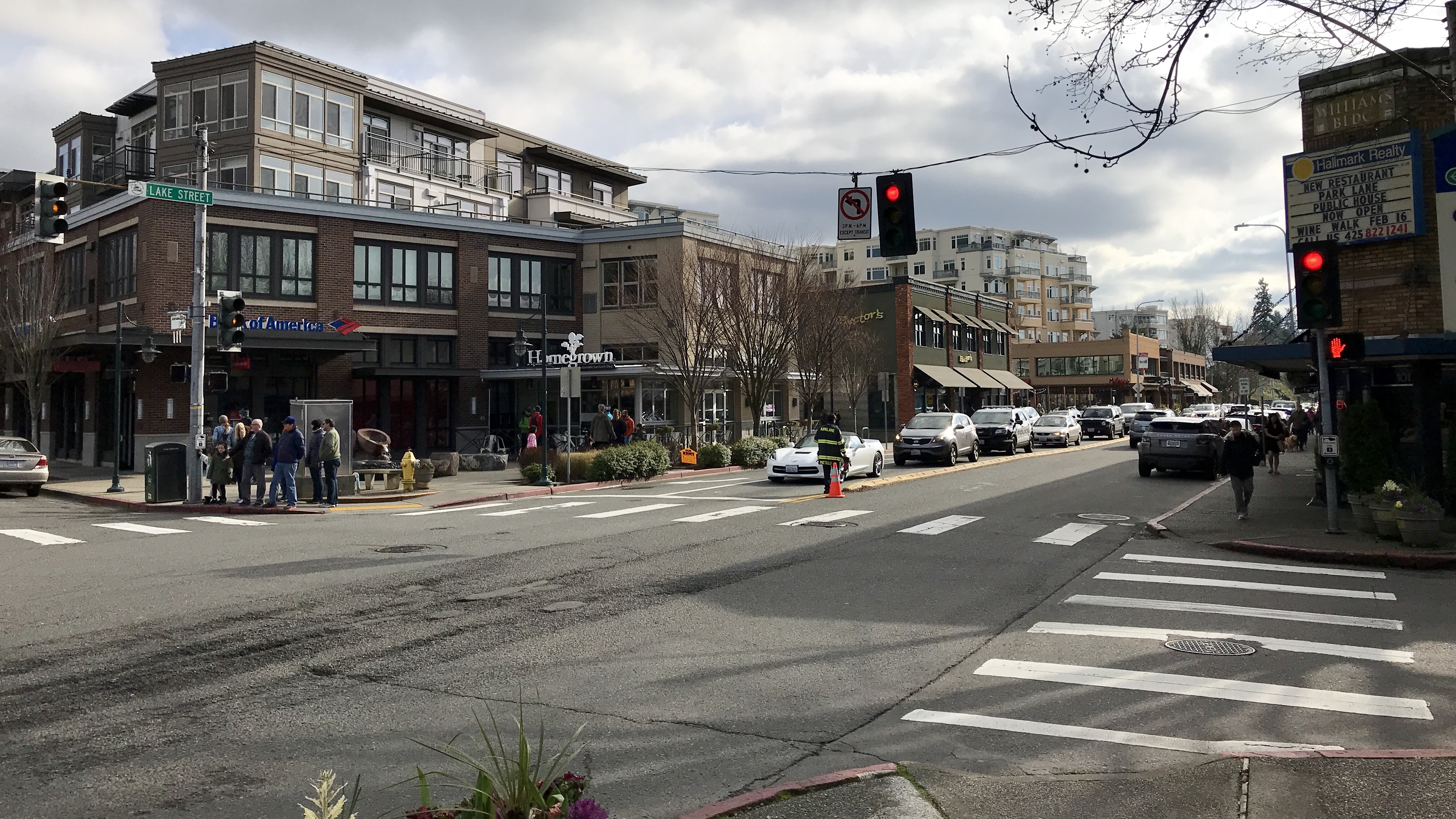
Mustard seeds
By Neal Black, ’94 (Civil/Environmental Engineering)
How small is a mustard seed, exactly?
I’m asking myself this from the dais of council chambers at the first council meeting after being sworn in. My decision to run for local office last November was inspired, in part, by my former Stanford classmate, now Senator, Cory Booker, who has instructed college graduates to “Stay faithful in things large and taking on the world, but stay faithful in those things small – because remember it’s the small things, the size of a mustard seed, that ultimately moves mountains.” As I work through tonight’s agenda, I’m wondering: When Cory thinks of a mustard seed, just how small a seed does he picture?
Tonight’s council agenda consists of a proposal to allow temporary signs on city right-of-ways (picture an A-frame sandwich board along the curb) and a proposal to up-zone four city blocks from two stories to five stories. Compared to things large, these seeds are tiny.
But wait. The community speaks, and I listen. I learn that A-frame sandwich boards are a matter of economic fairness and inclusiveness for some small business owners who can’t afford high-rent space along the main thoroughfare, some of whom are immigrants, older entrepreneurs, or just starting out. And those three extra floors? If done correctly, they’re a small part of a regional solution to affordable housing—a crisis here in the Seattle area.
Mustard seeds are tiny indeed. (I know. I Googled it.) But running for local office and working with like-minded neighbors to make small improvements to the city, ultimately, improves people’s lives.
 Neal began as a tutor for the Ravenswood-Stanford Tutoring Program (RSTP), working with students in East Palo Alto and Redwood City. He was a tutor coordinator in RSTP for two years. Neal was also a Stanford in Government fellow, interning at the Natural Resources Committee of the California State Assembly, and he attended Stanford in Washington, where he interned in the White House Office on Environmental Policy. Now a lawyer in Seattle, he has incorporated service to his community into his career and family life. He is the chair of the King County Bar Association’s Public Policy Committee, and, in November 2017, he was elected to the Houghton Community Council in Kirkland, Washington.
Neal began as a tutor for the Ravenswood-Stanford Tutoring Program (RSTP), working with students in East Palo Alto and Redwood City. He was a tutor coordinator in RSTP for two years. Neal was also a Stanford in Government fellow, interning at the Natural Resources Committee of the California State Assembly, and he attended Stanford in Washington, where he interned in the White House Office on Environmental Policy. Now a lawyer in Seattle, he has incorporated service to his community into his career and family life. He is the chair of the King County Bar Association’s Public Policy Committee, and, in November 2017, he was elected to the Houghton Community Council in Kirkland, Washington.
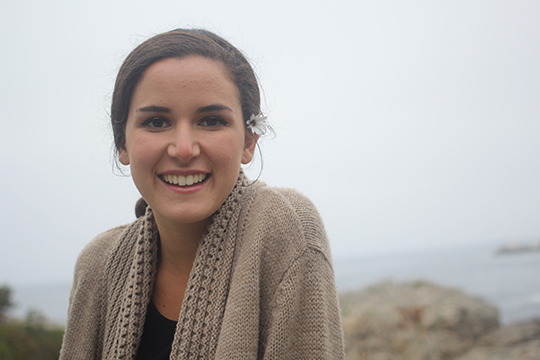
Words matter
By Marly Carlisle, ’17 (Political Science)
“People are homeless – they’re not ‘homeless people.’” Tod Lipka, the Executive Director of one of the largest homeless service providers in Los Angeles, said this at a panel I moderated titled “Abolishing Homelessness: It’s Not How, It’s When.” He was emphasizing the critical importance of highlighting a person’s humanity when speaking about homelessness. I think about homelessness on a daily basis – I wrote my thesis about it, I teach a course about it, and I serve on the board of directors of a homeless service provider. When discussing the issue of homelessness, it is easier to think about people who are homeless as abstract numbers and statistics, rather than considering their individual humanity. The mindful practice of saying “people who are homeless” instead of “homeless people” reemphasizes the individual experience of homelessness. It reminds me that “they” are “us,” but with different life circumstances. They are our neighbors, our community members, our fellow citizens. Us. I’ve moved away from “the homeless” and “homeless people,” opting for a more personal, human approach when discussing homelessness.
